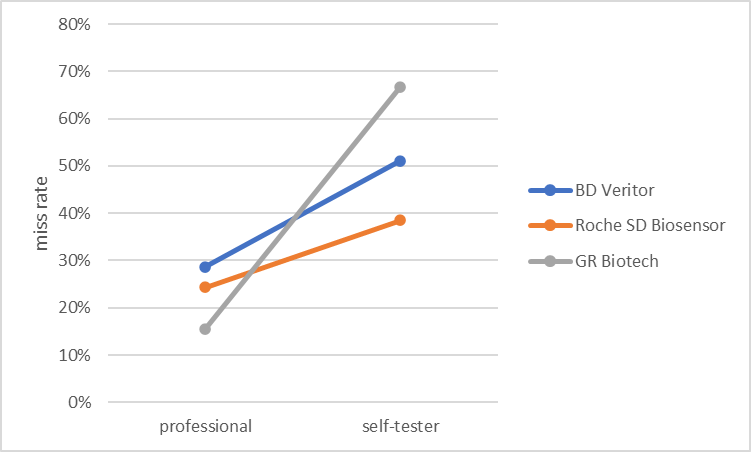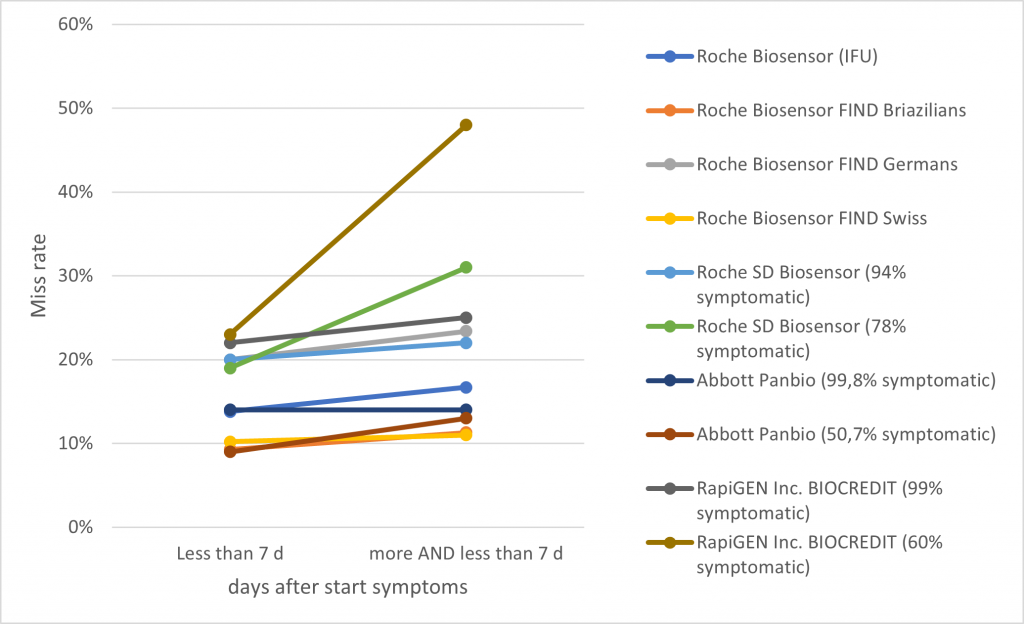


The miss rates of corona self-tests as reported in practice are quite shocking compared those reported in the self-test labelling. What causes those misses? What do we know based on data from clinical practice?
In part 1, I showed that the tests can have a miss rate of 1 out of 3 to 1 out of 4 when professionals use it, and even a miss rate of 1 out of 2 when professionals use it in emergency settings.
Today, I look at reason 3 and 4 that explain why the miss rates are so high.
Here are the 6 reasons that may explain why self-tests miss a diagnosis,
I checked the reasons against available data from the RIVM and the Foundation for Innovative New Diagnostics (FIND).
I’m not a professional nose-swabber and swab wringer, are you? It shows. Overall, self-testers do worse than the pros.

Three tests have been validated with self-sampling, and these have also been validated with samples obtained by professionals. See the picture below for the miss rates for professionals, and those for self-testers (for data see https://lci.rivm.nl/antigeensneltesten zelfafname [self-sampling], p 18). Note that the worst scoring test, the GR Biotech test, is validated with only 15 PCR+ samples, and not for sale as a self-test yet (for comparison, the BD Veritor results are based on 133 PCR+ samples, and Roche on 150 samples).
The figure above shows the miss rate of professionals on the left, and the miss rate of self-testers on the right.
Can self-testers be as good as professionals? Only time will tell…. For now I keep in mind that in any room with people that have self-tested, half of them may have missed a positive result and that this is up to almost twice as many as when professionals test them.
Having said that: filtering out half of the cases is still better than no test if it comes to preventing virus spread! So don’t let this keep you from not doing it!
What happens if you wait too long before you get tested? For most tests, the miss rate of antigen tests increases when symptoms started more than a week ago.
The picture below shows miss rates if you test early (on the left), and miss rates when test results of people that have been symptomatic longer are also included (on the right). “Early” means less than 7 days symptomatic. The data comes from the IFUs, Foundation for Innovative New Diagnostics (FIND, https://www.finddx.org/covid-19/tests/) and RIVM (https://lci.rivm.nl/antigeensneltesten).

As you can see, there is a tendency towards higher miss rates if people that waited (too) long to be tested are included in the results.
In my next posts, I will look at other reasons that have been named as causes for the shocking miss rates. If you can’t wait, please do not hesitate to PM or call ( +31 26 800 1219).
Do you need help getting the right clinical data to obtain a CE mark for a SARS-COV2 (self) test under IVDR (upclassified from self-certification under IVD to the highest risk class, class D under IVDR)? Do you need with setting up a performance evaluation and/or clinical tests for any other upclassified IVD? Do you need help determining if your IVD may be part of the 80% IVDs that are upclassified? Please do not hesitate to reach out!
Ines,
Enschede, 08-DEC-2021